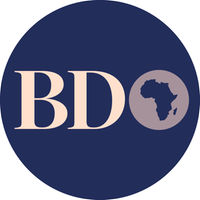
Treasury Cabinet Secretary Ukur Yatani. FILE PHOTO | NMG
Summary
- A public debt management report for 2019/2020 by the National Treasury shows that public debt acquired in the US currency has grown from 42.3 per cent in 2014 on account of commercial debts and sovereign bonds.
- This means that Sh2.37 trillion of the Sh3.52 trillion of total external debt was in dollars as at June 2020. The external debt has also bulged from Sh1.09 trillion as at June 2014.
- The rise in debt held in foreign currency denomination reinforces warning by organisations such as rating agency Fitch on the risk of currency depreciation on debt sustainability.
The portion of Kenya’s external debt held in dollar currency hit 67.3 percent as at financial year ending June, signalling a heightened risk of exchange rate depreciation on the country debt portfolio.
A public debt management report for 2019/2020 by the National Treasury shows that public debt acquired in the US currency has grown from 42.3 per cent in 2014 on account of commercial debts and sovereign bonds.
This means that Sh2.37 trillion of the Sh3.52 trillion of total external debt was in dollars as at June 2020. The external debt has also bulged from Sh1.09 trillion as at June 2014.
“The USD rise to dominance begun in 2012 mainly due to various USD denominated commercial loans and international sovereign bonds contracted or issued during 2012 to 2019,” the National Treasury said in the report.
The government has, however in the past year stopped acquiring expensive commercial debts due to higher interest rates charged on them.
Other currencies including Euro, Japanese Yen, Chinese Yuan and the Sterling Pound hold debt to 18.0 per cent, 6.6 per cent, 5.4 per cent and 2.5 per cent, respectively.
The rise in debt held in foreign currency denomination reinforces warning by organisations such as rating agency Fitch on the risk of currency depreciation on debt sustainability.
In July, Fitch warned that the impact of the exchange rate depreciation on the debt denominated in foreign currency would account for nine per cent increase in debt stock in the continent.
The shilling has weakened by 7.4 per cent against the dollar year-to-date, having opened 2020 at 101.34 and now at 108.83, meaning an increase in interests that were to be paid over the time.
Mr Kenneth Minjire, senior associate debts and equity at AIB-AXYS Africa, said weakening of the dollar would not lower Kenya’s repayments in dollar denomination significantly.
“The weakening of the dollar does affect the shilling, albeit marginally. So if we strengthen even to 108.80 it has almost a zero effect on reducing our debt load. It doesn’t affect our repayments more than the depreciation we have seen all through the year,” he said.
The report by the Treasury added that World Bank, through its concessional lending arm International Development Association, was the country’s largest lender at 24.8 percent under the period.
China, International Sovereign Bond holders and commercial banks had weights of 20.5 percent, 18.5 percent and 10.6 percent respectively.





No comments :
Post a Comment